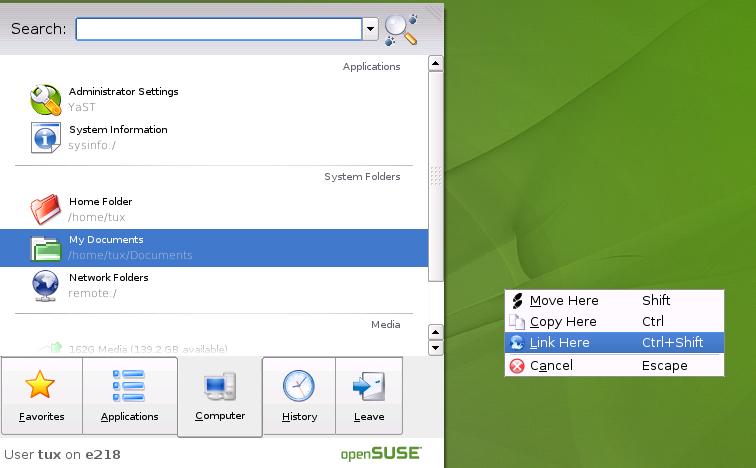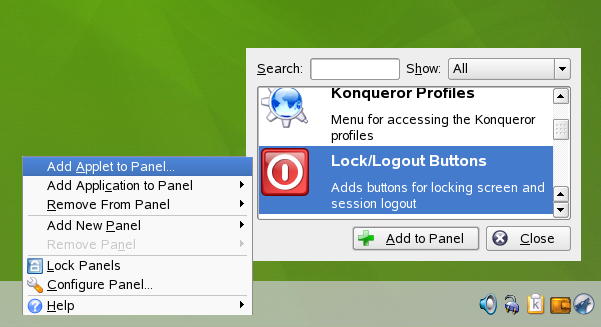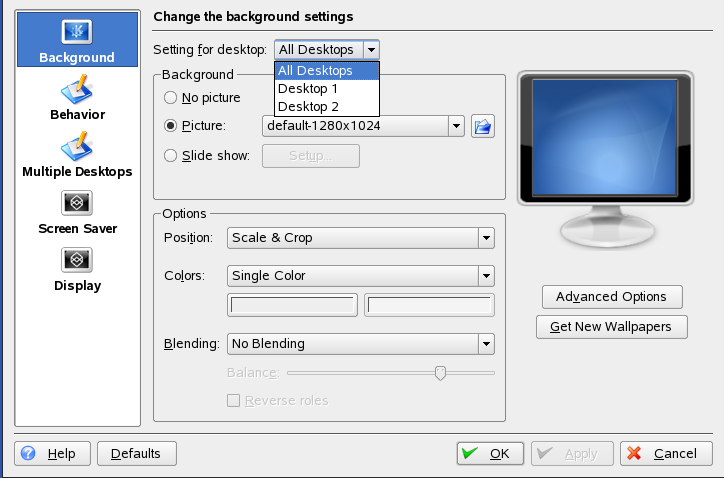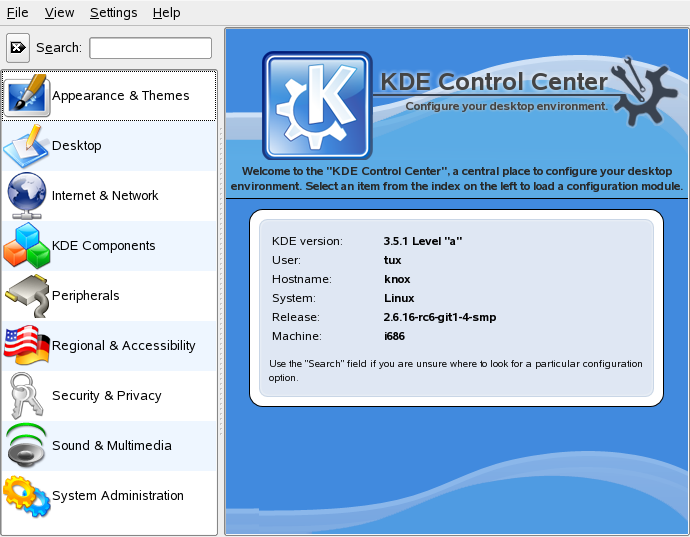Customizing Your Desktop
You can change the way your KDE desktop looks and behaves to suit your own personal tastes and needs.
Changing Individual Desktop Elements
In the following, find some examples of how to change individual desktops elements.
Adding Program Icons to Your Desktop
To create a link to an application and place it on the desktop, proceed as follows:
-
Click the main menu button.
-
Browse to the desired program.
-
Left-click and drag the menu entry to the desktop then release the mouse button.
-
Select from the context menu that appears then position the icon as desired.

To delete an icon from your desktop, right-click the program icon and select .
Customizing the KDE Panel
You can customize the KDE panel according to your preferences by adding, deleting, or moving icons or changing the overall appearance of the panel.
-
To add or remove icons from the panel, right-click an empty patch in the panel. A context-menu appears.
-
To add an application, click and select the desired application from one of the categories of the submenu.
-
To add an applet (miniprogram), click and, from the dialog box that appears, select the desired applet. Click to insert the applet into the panel.

-
To remove icons from the panel, select or and choose the icon to remove.
-
To change the overall appearance or behavior of the panel, select from the context menu. A configuration dialog appears where you can adjust further settings.
Changing the Desktop Background
You can change the background colors of your desktop or select a picture to use as the background. Because KDE offers virtual desktops (see Using Virtual Desktops), you can apply these changes to one or all of your virtual desktops.
-
Right-click an empty patch of the desktop and select . A configuration dialog appears.

-
In select the virtual desktops to which the changes should apply.
-
If you want a different picture as the background, click and select one of the pictures provided by the list. To use a custom picture, click the folder button beneath the list and select an image file from the file system.
-
Click to have multiple images appear in a slide show mode.
-
If you do not want a picture on the background, click .
-
From the group, click the left button below to select the color for your background. For a multicolor background, set to an option other than and click the right button below to select a second color.
-
Click then to close the configuration dialog.
Using the KDE Control Center
Apart from changing individual desktop elements, KDE allows you to personalize your desktop to a very high degree. Find more settings to adjust the overall appearance and behavior of your desktop in the KDE control center. There, you can also change fonts, keyboard and mouse configuration, regional and language settings, parameters for your Internet and network usage, and more.
Start the control center from the main menu by selecting or press Alt+F2 and enter kcontrol.

The sidebar provides different categories with a subset of settings each. To get an impression of the numerous possibilities, just click a category icon and explore the possibilities provided there.
For an overview of all categories, switch to a tree view. Change the view by selecting .
Clicking an item displays the corresponding settings on the right. Change the settings as desired. No changes take effect until you click . Reset all items on the page to the default values by clicking . Performing tasks in some areas of the control center requires system administrator (otherwise known as root) permissions.